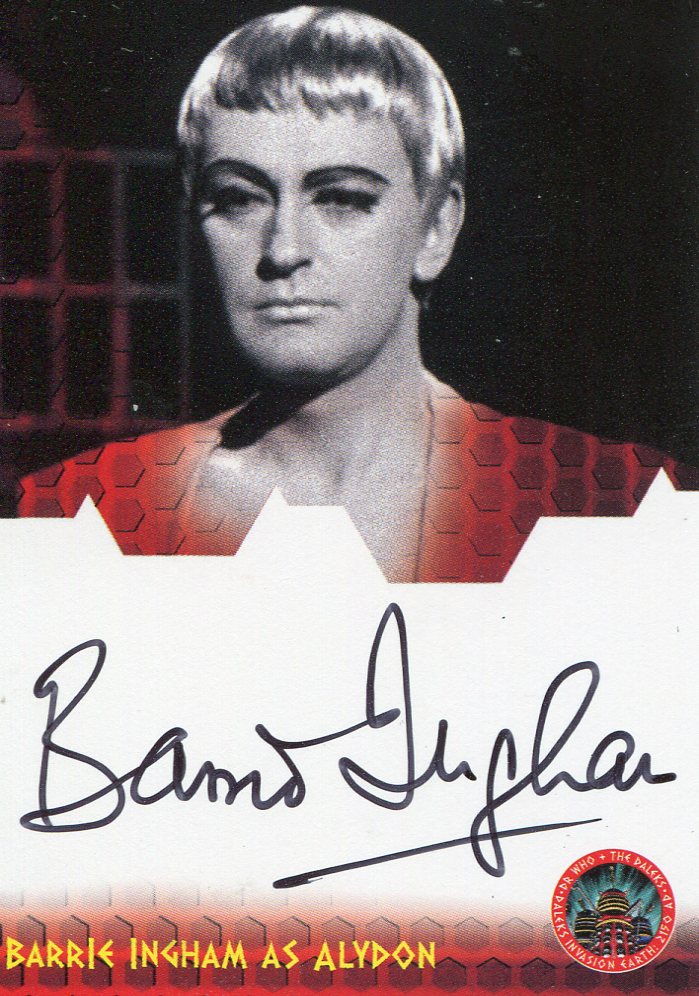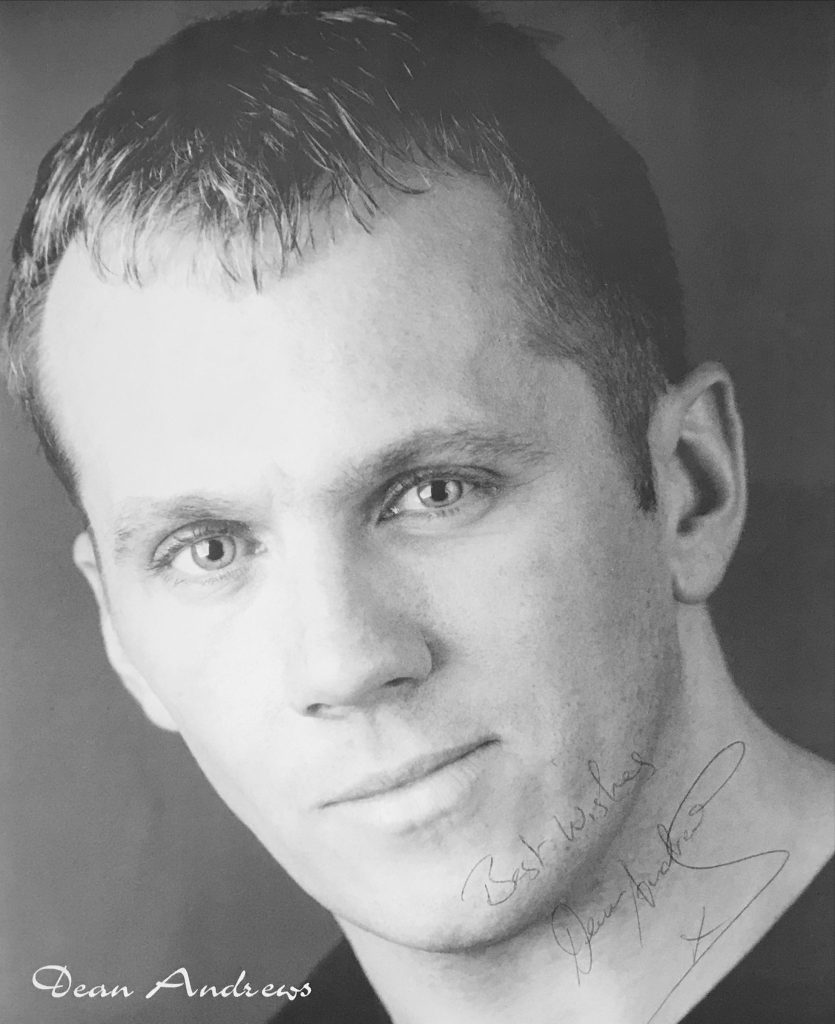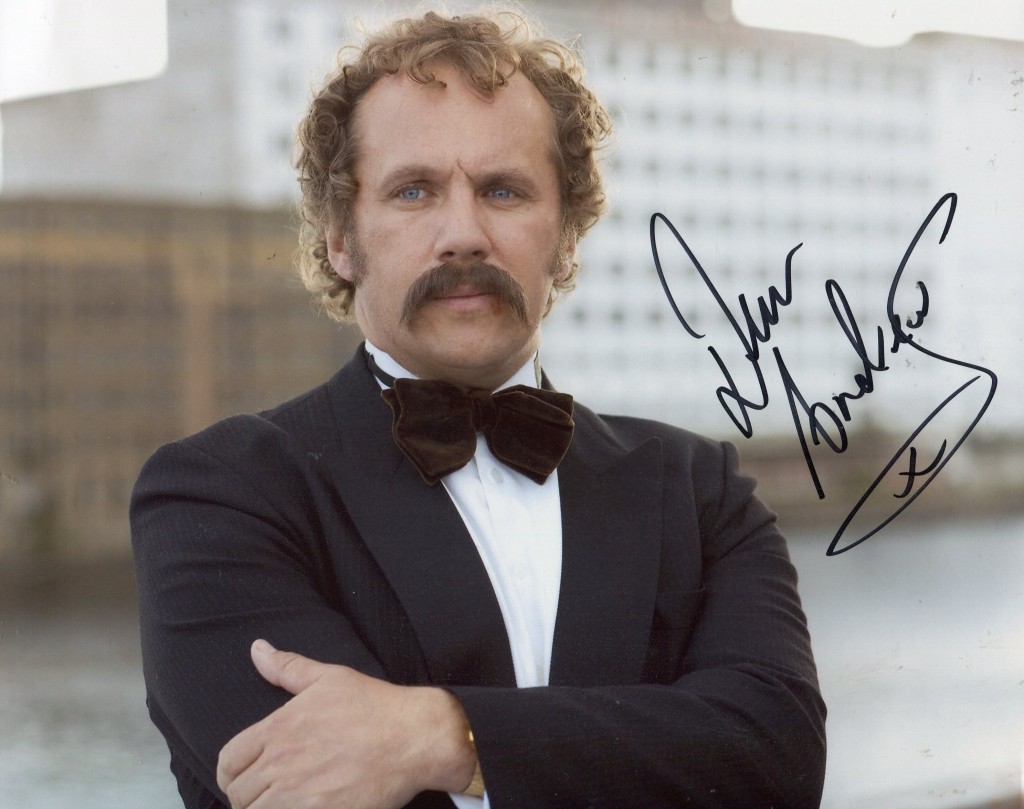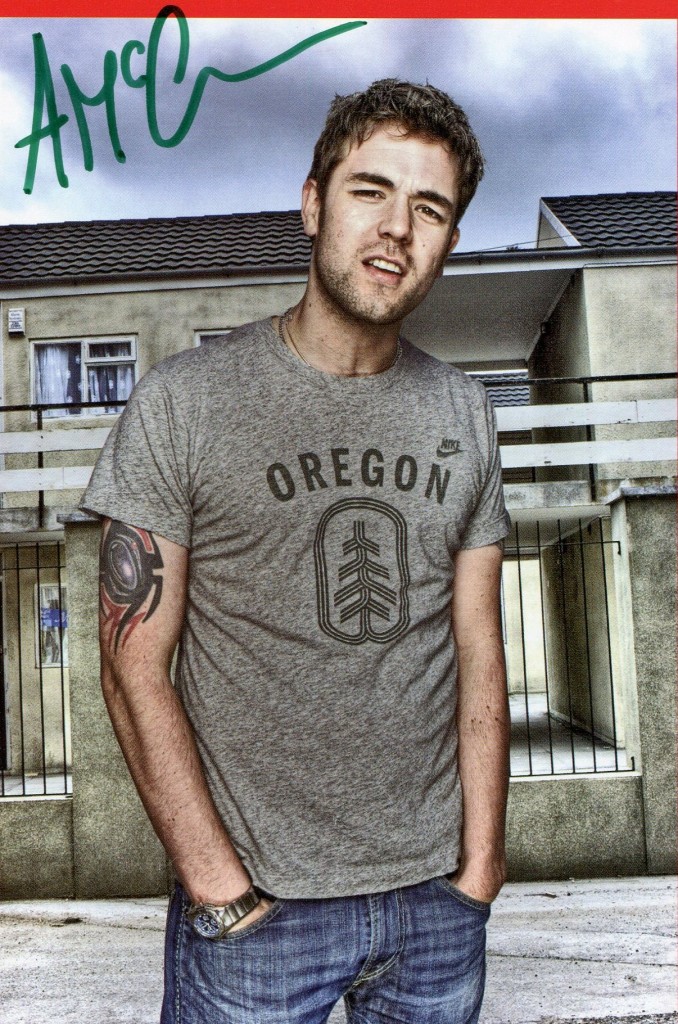
Pat McGrath was born in 1916 in Ireland. He is an actor, known for The Volunteer (1944),Cup-Tie Honeymoon (1948) and Ghost Ship (1952).

Brittish Actors

Pat McGrath was born in 1916 in Ireland. He is an actor, known for The Volunteer (1944),Cup-Tie Honeymoon (1948) and Ghost Ship (1952).

Obituary from “The Guardian”:
The career of the actor Barrie Ingham, who has died aged 82, was so varied that you might have thought he had several incarnations: as an associate artist with the Royal Shakespeare Company, in British and Broadway musicals, and as the voice of the sleuth rodent Basil in Disney’s animated mystery movie The Great Mouse Detective (1986), tracking his archenemy, voiced by Vincent Price.
No one looked more like a leading man: Ingham was tall, handsome, ramrod straight – he served as an officer in the Royal Artillery during his national service – with a fine singing voice. Naturally gifted, he was equally adept in farcical sitcom or stylish high comedy.
He was born in Halifax, West Yorkshire, the only son of Harold Ingham and his wife, Irene (nee Bolton), who owned a furniture store in the town, and was educated at Heath grammar school, which, during the second world war, hosted the local amateurs, the Halifax Thespians. Barrie joined them as a teenager and remembered seeing, across the road from his bedroom, the bust of Shakespeare outside the new Halifax Playhouse, converted from a Wesleyan chapel, which opened in 1949.
After national service, he worked in the family business before making his professional debut in 1956 at the Pier Pavilion, Llan- dudno, in Arnold Ridley’s Beggar My Neighbour. He met the actor Tarne Phillips at the St Helens TheatreRoyal on Merseyside, where they played romantic leads in Johnny Belinda, Rebecca and Jane Eyre; they married in 1957.
Ingham went on to play a season at the Library theatre in Manchester. He joined the Old Vic at the end of 1957 and played Fortinbras to John Neville’s Hamlet; this was followed by increasingly important roles. So he was an ideal Claudio whenJohn Gielgud was invited to open the 1959 Broadway season with a revival of his celebrated Much Ado About Nothing – in which Gielgud played Benedick opposite Margaret Leighton as Beatrice.
Back in Britain in 1960, Ingham toured with Maggie Smith, Michael Bates and Michael Blakemore in Strip the Willow by Beverley Cross (“an odd play,” said Blakemore, “derived from drawing-room comedy and Peter Ustinov”) and appeared in John Arden’s The Happy Haven at the Royal Court, a comedy set in an old people’s home where the actors wore masks. Neither play was a success, but they illustrated the theatre of the day, on a tipping point between old and new.
In that decade of convulsive change, Ingham steered a course through the middle (though he did play, rather daringly, both Stavrogin in Dostoevsky’s The Possessed and Dionysus in The Bacchae of Euripides at the Mermaid theatre), appearing with Harry Secombe in the musical Pickwick (1964) at the Saville and, at the same theatre two years later, as Clancy Pettinger in On the Level, a charming but soon to be obsolete type of musical, by Ronald Millar (the playwright who later became a speechwriter for Margaret Thatcher) and Ron Grain
He was prominent in two fine TV series of the late 1960s, The Caesars and The Power Game – ancient and modern versions of the same thing , perhaps – and made a mark in films such as Gordon Flemyng’s Dr Who and the Daleks (1965) and Hammer’s A Challenge for Robin Hood (1967), in which he played the title role. Then he refocused and joined the RSC for four years (1967-71) in Stratford-upon-Avon and London. He played Leontes opposite Judi Dench in Trevor Nunn’s nursery all-white The Winter’s Tale, Brutus in Julius Caesar and Lord Foppington in The Relapse. With Dench and Donald Sinden, he appeared in two of the greatest productions of that era, John Barton’s Twelfth Night (as Aguecheek) and Dion Boucicault’s London Assurance.
His musical theatre skills served the 1973 London premiere of Gypsy, in which he played Herbie the manager opposite first Angela Lansbury and then Dolores Gray, both sensational, at the Piccadilly. He was Smith’s husband in a short run of a not very funny comedy about sexually transmitted disease, Snap (the title Clap was deemed unsuitable), by Charles Laurence, at the Vaudeville in 1974.
When he rejoined the RSC later in the same year, as the Duke “of dark corners” in Measure for Measure, he was made an associate artist of the company, but he only returned to the fold once thereafter, stealing the notices as Beverley Carlton, a brilliant send-up of Noël Coward, in an otherwise misfired 1989 revival at the Barbican of the Broadway classic The Man Who Came to Dinner.
Three years before, at the National Theatre, he had appeared in David Hare’s The Bay at Nice (opposite Irene Worth) and as the wise narrator of Arthur Miller’s episodic Depression play The American Clock. But he was increasingly peripatetic, touring a solo show to Australia, making sitcoms in Los Angeles and appearing on Broadway as King Pellinore in a revival of Camelot, as Sir George Dillingham in Andrew Lloyd Webber’s Aspects of Love, and then for four years (1997-2001) as Sir Danvers Crew in a musical Jekyll and Hyde by Frank Wildhorn and Leslie Bricusse.
We lost sight of him – he undertook big American tours of Me and My Girl, Aspects of Love and Camelot – but he returned to the West End in Trevor Nunn’s glorious 2003 resuscitation of Cole Porter and PG Wodehouse’s Anything Goes, and as a fruity old boyfriend of Maureen Lipman’s dotty diva Florence Foster Jenkins in Peter Quilter’s Glorious! directed by Alan Strachan at the Birmingham Rep and the Duchess (2005).
Ingham latterly settled in Palm Springs, Florida, where he performed and lectured on Shakespeare.
He is survived by Tarne, and their four daughters, Catrin, Liane, Francesca and Mali, and eight grandchildren.

Wikipedia entry:
Born in 1963 in Rotherham, West Riding of Yorkshire, Andrews went to Sitwell Junior School on Grange Road and Oakwood Comprehensive School on Moorgate Road. He went to school with Top Gear presenter James May.[3] His parents were publicans and he lived at the Masons Arms pub on Wellgate and the Green Dragon in Kimberworth. He belonged to the local Phoenix Amateur Operatic Society and appeared in several productions with Phoenix Players. He began work at Kirkby Central, a Vauxhall car dealership, in Wellgate, then began singing at holiday resorts such as Skegness, Lincolnshire, and on cruise ships over twenty years. His entry into acting came when successfully auditioning for the 2001 film, The Navigators, which was set in Sheffield.

Andrews played Barry Shiel in the TV series Buried, which won the BAFTA Award for Best Drama Series in 2004. In 2005, Andrews played the character of Steven Maynard in the ITV drama Wire in the Blood. In 2007, he appeared in the BBC dramas True Dare Kiss and The Street. In 2006, he appeared in yet another BBC drama, Life On Mars, as the character DS Ray Carling. In 2008, he returned to play the character in the spin-off series Ashes to Ashes. Andrews also had a small role in the Channel 4 series No Angelsplaying Neil. He also starred in episode 11, series 5 of Waterloo Road. Andrews played one of the lead roles in ITV’s supernatural drama series Marchlands.
In 2011, he appeared in the BBC Two TV film United, which tells the story of the Manchester United “Busby Babes“ team and the 1958 Munich air disaster. In September 2011 he appeared in the BBC drama The Body Farm as Peter Collins. In November 2012 he appeared in the six part BBC drama Last Tango in Halifax as Robbie. He plays the lead role in the five part BBC One series The Case, about a man accused of murdering his terminally ill girlfriend. He has also recorded voice-overs for Currys television advertisements.[4]Andrews will take over the role of Pete Lewis from Stephen Graham in the BBC show Being Eileen, airing from February 2013.[5][6][7]
In 2015 Andrews appeared as Tom Asher in ITV’s Midsomer Murders episode 17.3 “The Ballad of Midsomer County”
Andrews has two daughters, Sharny and Alice (born c.1985 and c.1991). He is a passionate supporter of his local football team, Rotherham United. He also enjoys watchingrugby league.
In September 2010, Andrews took part in the Bupa Great Yorkshire Run to raise funds for the Alzheimer’s Society, Bupa’s nominated charity for the 2010 Bupa Great Run Series.

Aaron McCusker was born in 1978 in Portadown, County Armagh, Northern Ireland. He is an actor, known for Shameless (2004), Shooting for Socrates (2014) and Murder (2002).

Cathryn Harrison was born on May 25, 1959 in London, England. She is an actress, known for Black Moon (1975), The Dresser (1983) and Images (1972). She has been married to Paul Laing since May 1996.

Richard Dormer (born 11 November 1969) is an Northern Irish actor, playwright and screenwriter. He is best known for his role as Beric Dondarrion in the HBO television series Game of Thrones and Dan Anderssen in Sky Atlantic‘s Fortitude.
Dormer was born in Portadown, Northern Ireland. He studied at the RADA school of acting in London. After living and working in London, he returned to Northern Ireland. He lives in Belfast and is married to director Rachel O’Riordan.
Dormer gained recognition following his performance as Northern Irish snooker star Alex Higgins in Hurricane in 2003, which he wrote and starred in. Dormer won The Stage award for best actor in 2003. In 2004, Dormer won the Irish Times Best Actor Award for his performance in Frank McGuinness‘s Observe the Sons of Ulster Marching Towards the Somme and in 2005 completed a season with Sir Peter Hall at the Theatre Royal and starred in Bath as Antonio in William Shakespeare‘s Measure for Measure, Jean in August Strindberg‘s Miss Julie and in a production of Samuel Beckett‘s Waiting for Godot.
Since, Dormer has written a number of plays including The Half and Gentleman’s Tea Drinking Society which were produced through Belfast’s Ransom theatre company. In 2012, Dormer was commissioned by the Abbey Theatre to write a production. Set in Brooklyn in the summer of 1969, Dormer’s Drum Belly gives an insight into the dark edgy underworld of New York’s Irish gangsters and opened April 2013 to mainly positive reviews and was published by Bloomsbury Publishing Dormer has also provided the voices for over twenty BBC Radio 4 plays, documentaries and advertising campaigns.
Following a run of film castings playing secondary characters, he was cast as the lead in the 2012 Good Vibrations which tells the story of Northern Ireland personality and punk rock visionary Terri Hooley. The film premièred at the 2012 Cannes Film Festival, was awarded Best Film at the Galway film awards, best screenplay, Dinard and nominated for the Outstanding Debut award at the 2014 British Academy of Film and Television Arts Awards. The film was well received by critics gaining consistent reviews, most of which highlighted Dormer’s performance as a strength. Dormer’s portrayal of Terri Hooley saw him nominated in the Best Actor award in the 2013 Irish Film and Television Awards. He has since played roles in Yann Demange‘s critically acclaimed film ’71 alongside Jack O’Connell and forthcoming Gerard Johnson directed Hyena, 2014.

Dormer has become a well known television actor, more recently playing key roles in the Cinemax drama series Hunted and BBC One‘s Hidden.[16][17] 2012 also saw Dormer taking over the role of Lord Beric Dondarrion, known as the “Lightning Lord”, the leader of the “Brotherhood Without Banners” for Season 3 of HBO series Game of Thrones. In 2016, Dormer reprised his role as Dondarrion in the sixth season of the series and returned for the seventh season, airing in 2017 as well as the eighth and final season, airing in 2019.[19]
Dormer is the voice of the Dad on the children’s animated series Lily’s Driftwood Bay. The series aired in May on Nick Jr. in the UK and on Sprout in the US. It also airs on RTÉ in Ireland, ABC Australia, KiKa in Germany, MTV in Finland, NRK in Norway, SVT in Sweden, and HOP! in Israel. Broadcasters in Australia and the US are keeping the original voices to the series.
In 2014, Dormer began filming on Sky Atlantic’s Fortitude. Described as “their most ambitious project to date”, he takes the role of Sheriff Dan Anderssen and stars alongside Stanley Tucci, Michael Gambon, Christopher Eccleston and The Killing‘s Sofie Gråbøl. Fortitude aired on 29 January 2015. The series is set in the fictional Arctic Norwegian settlement of Fortitude. On 9 April 2015, Sky Atlantic recommissioned the show for a second series consisting of 10 episodes.
Also in 2015, Dormer starred in the BBC drama We’re Doomed! The Dad’s Army Story as TV producer David Croft. The comedy drama retells the creation of the popular BBC sitcom Dad’s Army as well as the relationship between Croft and Jimmy Perry who became successful TV comedy writers.
Dormer is married to theatre director Rachel O’Riordan.
Anyone who knows me are aware that I am a bit of a movie buff. Over the past few years I have been collecting signed photographs of my favourite actors. Since I like movies so much there are many actors whose work I like.